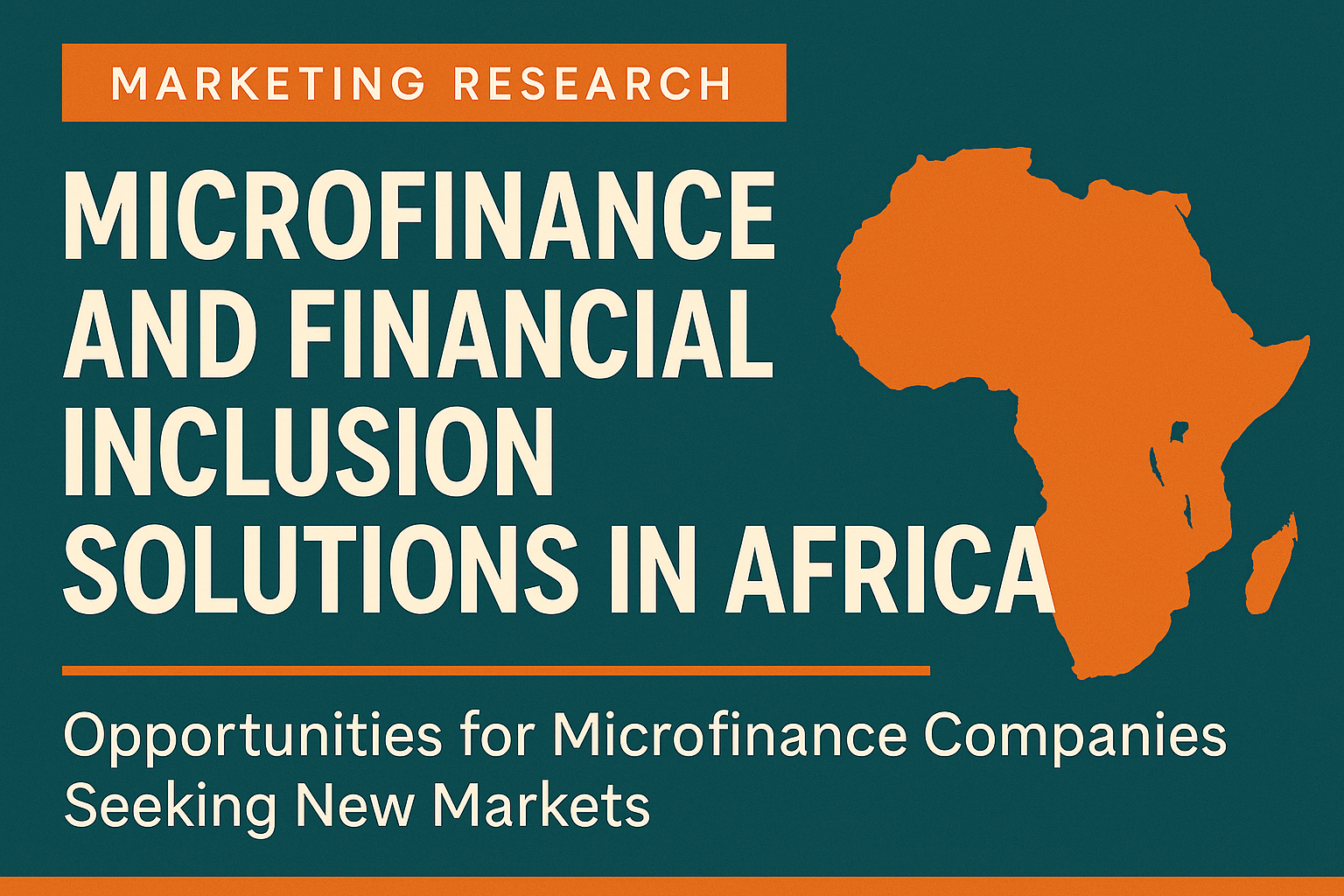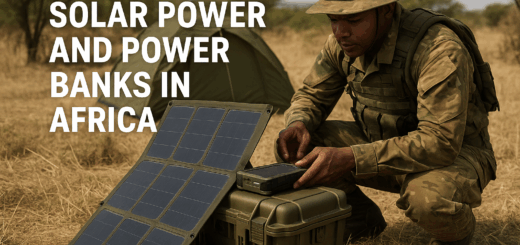AFRICA Microfinance and Financial Inclusion Solutions

Marketing Research: The African Microfinance Market and Financial Inclusion Solutions
Target Clients, Market Prospects,
Constraints, Risk Mitigation Recommendations,
Overview of the Top Promising Countries
This report provides an in-depth analysis of the African microfinance and financial inclusion market, focusing on small-loan services for low-income populations, women entrepreneurs, and rural communities. It includes:
- Market Potential Overview – key demand drivers, main beneficiaries (small businesses, farmers, informal workers), market volume and profitability forecasts.
- Regional Segmentation – priority countries and financial inclusion clusters, specifics of macro-regions (Sahel, Horn of Africa, Central, North, and Southern Africa).
- Regulatory Barriers Analysis – licensing requirements for microfinance institutions (MFIs), national banking and consumer protection standards, and local compliance obligations.
- Product and Service Requirements – types of microcredit, group lending models, digital micro-lending platforms, mobile money integrations, and credit scoring mechanisms for unbanked populations.
- Financial and Contract Risks – currency volatility, borrower solvency, repayment risks, and recommendations on portfolio diversification and insurance.
- Logistics and Infrastructure – mobile network coverage, digital payment ecosystems, agent banking networks, and operational cost considerations.
- ESG and Compliance – social impact reporting, responsible lending practices, anti-money laundering (AML) regulations, and data privacy requirements.
- Practical Recommendations – step-by-step market entry strategy, including regulatory preparation, partnerships with local banks and fintechs, staff training, and social impact alignment.
- Risk Map and Mitigation Measures – structured overview of political, legal, and operational risks with specific mitigation tools.
- Country-Specific Insights – comparative assessment of Nigeria, Kenya, Rwanda, Tanzania, Uganda, Egypt, and South Africa in terms of attractiveness, risks, and financial inclusion potential.
The report is designed for microfinance institutions, impact investors, fintech providers, and strategic partners planning to expand in the African market.
Research Content
BRIEF
AFRICAN MICROFINANCE MARKET OVERVIEW
Regional Market Analysis and Financial Inclusion Indicators
Priority Lending Segments (rural women, informal economy, SMEs)
Role of Mobile Money and Digital Lending Platforms
National Microfinance Regulations and Licensing Procedures
Partnerships with NGOs and Development Agencies
Government Programs Supporting Financial Inclusion
Credit Scoring Challenges and Data Infrastructure
Consumer Protection and Ethical Lending Standards
Regulatory Roadmap for Foreign MFIs
Legal and ESG Factors
Marketing and Operational Specifics
Distribution Channels and Agent Networks
Tax and Compliance Environment
Key Risks in Loan Portfolio Management
Risk Map and Mitigation
Critical Success Factors for Sustainable Microfinance Operations
Procurement of Funding and Donor Grants
Consolidated Table of Requirements for Entering the African Microfinance Market
Localization and Partnerships with Local Cooperatives
Digital Infrastructure and Mobile Payment Systems
Financial and Contract Risks
Financing and Payment Instruments
Table: Key Risks and Mitigation Measures
Common Mistakes of Foreign MFIs
Key Barriers to Financial Inclusion
Strategic Recommendations
Strategy for Entering the African Microfinance and Financial Inclusion Market
FINAL REVIEW
DETAILED BY COUNTRIES
Nigeria
Rwanda
Kenya
Tanzania
Uganda
Ethiopia
Egypt
South Africa
FOR EACH COUNTRY, THE FOLLOWING ASPECTS ARE DESCRIBED IN DETAIL:
GDP and GDP per capita
Financial inclusion rate and banking penetration
Mobile money ecosystem and fintech adoption
Population size and rural vs urban distribution
Security level and political stability
Crime rate and fraud risks in financial services
Licensing requirements for MFIs
Specifics of starting a financial service business for foreigners
Religion and cultural attitudes toward credit
Feedback from microfinance practitioners in the country
Language of business communication
Conditions and cost of establishing a legal entity or branch
State of mobile and digital payment infrastructure
Taxation on financial services
Cost of bringing capital into the country
Availability of special microfinance programs and donor funding
Difficulties in obtaining an investor or microfinance license
Behavioral specifics when dealing with local borrowers
Availability of benefits in social impact investment and development finance
Risk of the country’s involvement in political or economic crisis
Which international agencies provide financial aid and influence the sector
Business risks for a foreign microfinance operator
General conclusion on the country
If you would like to purchase the research, please contact us using the details provided in the “Get in Touch” section.

